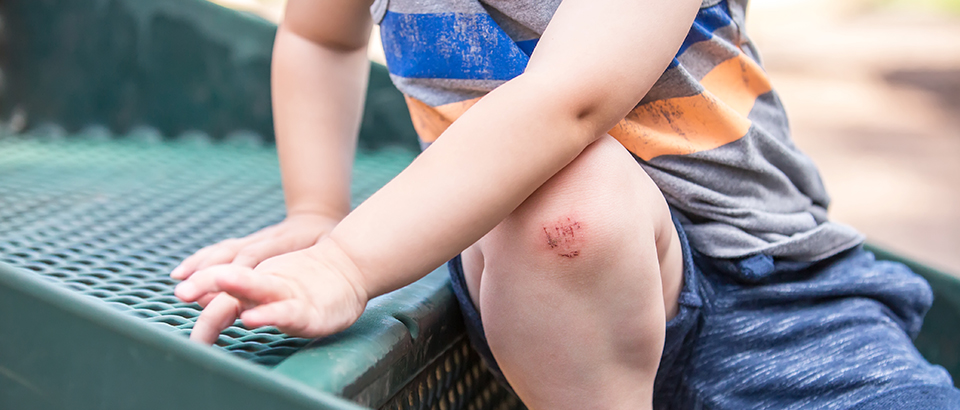Ah, sweet summertime. There’s just something about the feel of the warm sun, smell of the grill, and sound of a baseball game that you just can’t beat. But along with the vacations and road trips, the summer season may also lead to certain skin conditions that can be a nuisance to both adults and children. One such offender is cellulitis.
What is Cellulitis?
Cellulitis is a common, but potentially serious bacterial infection that infects the deep layers of skin and tissue beneath the skin. These infections occur when bacteria enter through a crack or break in your skin. Cellulitis can manifest anywhere on your body, but is most common on exposed parts of the skin like the lower legs, hands, arms, and face.
Does Cellulitis Need Medical Attention?
While cellulitis is a common infection, it may become serious if not properly treated, so it's important to visit a healthcare professional if you notice any of the following symptoms:
- Redness in the skin that expands or streaks.
- Swollen skin that can be tender or even painful.
- Areas of the skin that are warm to the touch.
- Red, blotchy skin that may blister or dimple.
You should seek immediate emergency care if:
- You develop a rash. Is it swollen and painful? Is it changing rapidly? Get it checked out.
- You develop a fever. Don’t sit on this one, either. If a fever accompanies your symptoms, please consult a healthcare professional immediately.
A healthcare professional can consider the severity of your symptoms when determining treatment, which may include an oral antibiotic. You’ll want to stay in touch with your healthcare professional as the infection heals and responds to medication to determine if a course correction is required. If the infection doesn’t respond to the initial antibiotic choice, alterations to the antibiotic regimen may be necessary, which could include a change to IV medications.

What Causes Cellulitis? Why Do Diagnoses Rise in the Summer?
Cellulitis tends to occur most often in June, July, and August. In fact, visits to MedExpress related to cellulitis accounted for more than 4 percent of all visits during those months in 2018. Additionally, cellulitis diagnoses were 4 percent higher last summer than they were in 2017 – all the more reason to cover up those cuts and scrapes.
So, what gives? Why do we see higher rates of diagnosis in the warmer months?
A possible explanation for this occurrence is because the summer heat causes more sweating and swelling, leading to skin abnormalities.
Climates with higher temperatures and higher humidity may be home to elevated levels of bacteria, and the concentration of bacteria living on your skin may be higher in the summertime as compared to a cooler season.
Also, the allure of summertime and it’s warm, sunny weather will most definitely take us outside. We’ll venture to the beach, go for hikes, play outdoor sports, and walk barefoot in the back yard. Unfortunately, these fun activities frequently expose our skin (specifically our hands, legs, and feet) to the elements. Open scrapes, cuts, and other injuries can increase the risk of infection.
The frequency of animal bites, insect bites, and water exposure also all generally increase during the summer months, which all may contribute to the risk of cellulitis in the warmer weather.

Is Cellulitis Contagious? How Can Cellulitis be Prevented?
In most cases, cellulitis is not contagious. However, some factors can increase your risk of developing cellulitis, such as having an open wound like a cut, a chronic skin condition, or chickenpox and shingles.
With some extra care this summer, you can help significantly lower your risk of contracting cellulitis. If you develop a skin wound, take the following precautions:
- Keep it clean. Make sure to wash the wound every day with soap and water.
- Apply an antibiotic. For most minor cuts, scrapes, and abrasions, an over-the-counter antibiotic ointment should do the trick.
- Cover it up. Apply a bandage to the wound and change it regularly to quicken the healing process.
- Monitor for infection. Remember, if redness persists and the wound continues to be painful, it may be time to consult a healthcare professional.
Following these simple steps will help avoid any infections and will get you back on your feet in no time.
